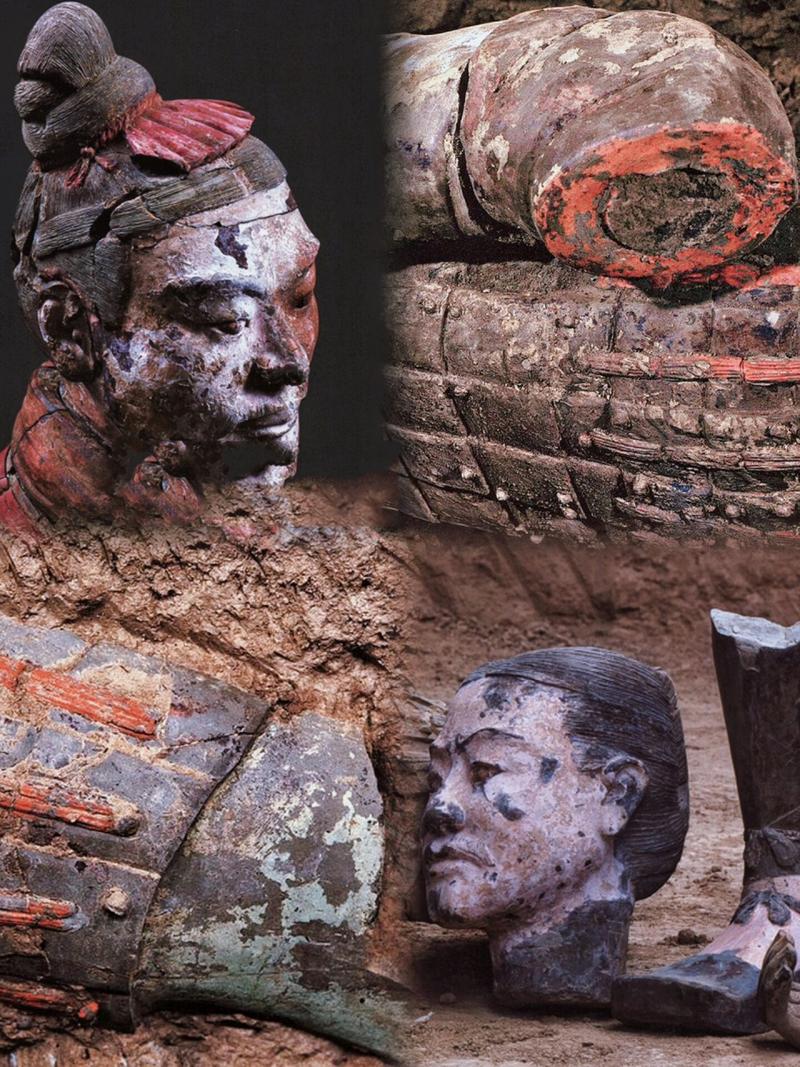
How Many Terracotta Warriors Are Buried?
The Discovery So Far
As of today, archaeologists have unearthed approximately 8,099 terracotta warriors. These life-sized figures, crafted from burnt clay, stand as a testament to the might and grandeur of the Qin dynasty. Discovered in 1974 by local farmers digging a well, the Terracotta Army has since captivated the world with its sheer scale and intricate detail.
Location and Arrangement
The army is situated approximately 1.5 kilometers east of the tomb of Qin Shi Huang, the first emperor of a unified China. The warriors are positioned in battle formation, arranged in three meticulously planned rows, each serving a distinct purpose:
- Vanguard: The front row, comprised of archers and crossbowmen, represents the vanguard, ready to engage the enemy from afar.
- Main Force: The second row forms the main force, consisting of heavily armored infantrymen armed with spears, swords, and halberds.
- Rear Guard: The third row serves as the rear guard, equipped with a mix of weapons and likely responsible for reinforcing the front lines and protecting the flanks.
Beyond the Soldiers
The Terracotta Army is not solely comprised of soldiers. Excavations have also revealed:
- Chariots and Horses: Over 130 chariots, each pulled by four meticulously sculpted horses, have been unearthed, showcasing the importance of chariot warfare in ancient China.
- Commanders and Officials: Scattered amongst the ranks are figures depicting high-ranking officers and officials, identifiable by their elaborate armor and headwear.
- Musicians and Acrobats: Evidence suggests the presence of musicians and acrobats, suggesting that entertainment played a role in the afterlife, at least for an emperor.
The Unanswered Question
While the discoveries to date have provided invaluable insights into the Qin Dynasty and ancient Chinese military practices, the exact number of terracotta warriors buried remains a mystery. The vastness of the site, combined with the ongoing nature of the excavations, suggests that thousands more figures could still lie buried, patiently awaiting their turn to be unearthed and share their secrets with the world.
Q&A
Q: When was the Terracotta Army discovered?
A: The Terracotta Army was discovered in 1974 by local farmers digging a well.
Q: Why were the Terracotta Warriors buried?
A: The warriors were buried with Qin Shi Huang, the first emperor of China, to serve as his guardians and army in the afterlife.
Q: What can we learn from the Terracotta Army?
A: The Terracotta Army provides invaluable insights into ancient Chinese military organization, weaponry, armor, and cultural practices during the Qin dynasty.
note: This return of all, without the author's permission, may not be reproduced